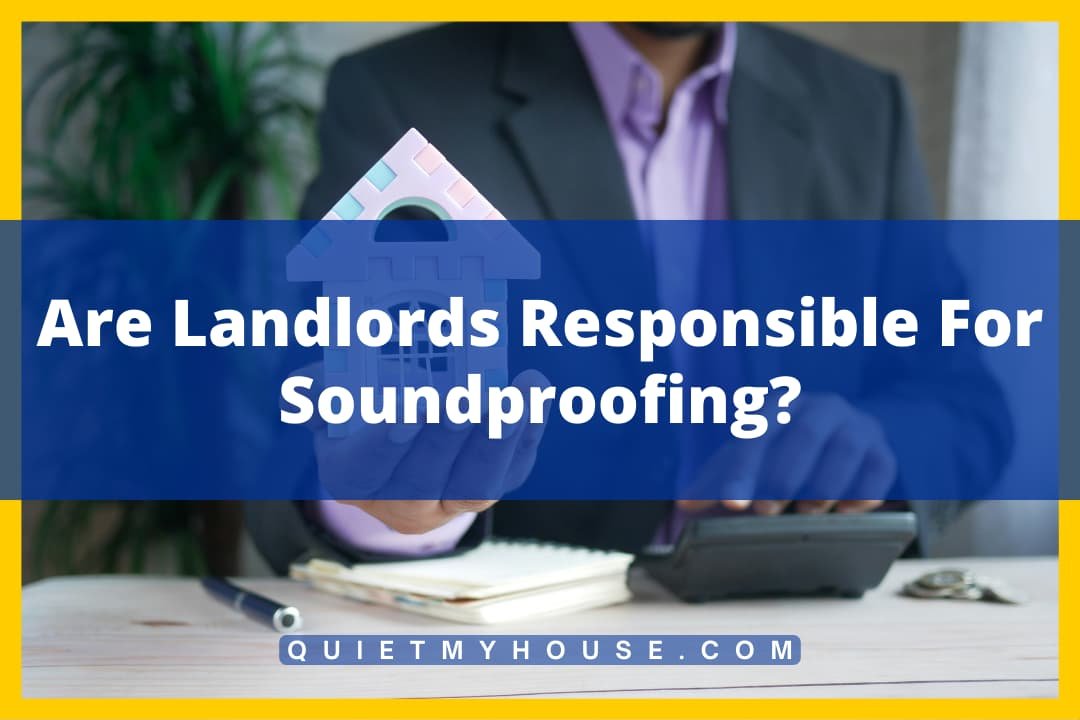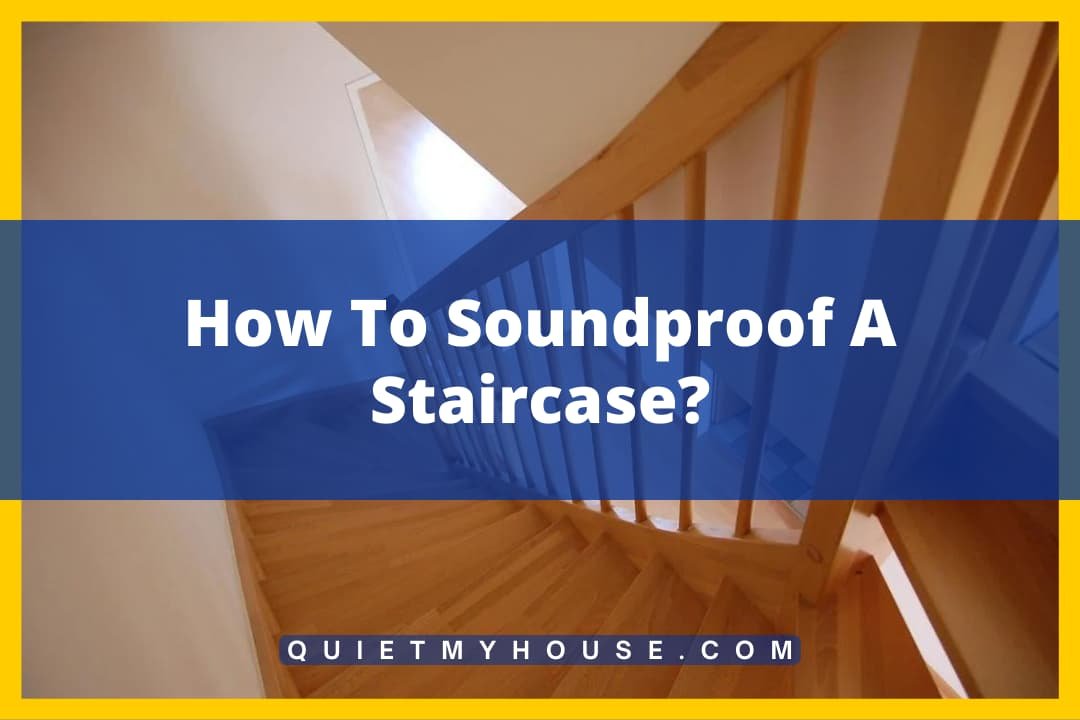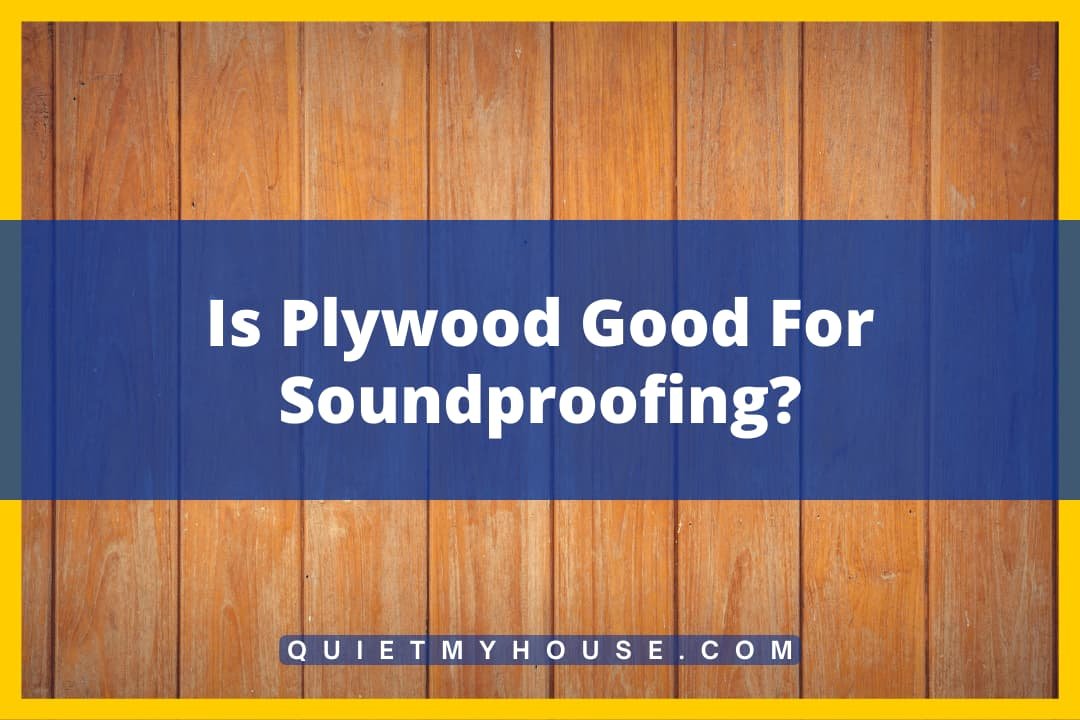When people talk about soundproofing, it’s often about walls and ceilings. Walls and ceilings aren’t constructed in the same way floors are, though, and often floors aren’t the obvious place to start soundproofing. So, how are floors soundproofed?
If altering the floor itself isn’t an option, use carpet padding, rubber floor mats, or interlocking floor mats to prevent noise from traveling through the floor. If pulling up the floor is possible, install soundproof underlay, a noise-proofing compound, or additional flooring.
More information about why so much noise travels between rooms and about different ways to soundproof floors is below.
Impact Noise
A lot of sounds that travel through floors are called impact noise. Impact noise is caused when one object hits another and the collision (or impact) generates a sound wave that travels through anything connected to the second object. Concerning floors, the majority of impact noise comes from footfalls.
When a person walks across the floor, their feet come in contact with the floor with each step. Every time they put their foot down, it generates a sound wave that travels through the flooring, the frame it’s connected to, the building skeleton that’s connected to, and so on and so forth.
At some point, the sound wave will reach the last object in the chain of building parts and travel into the open air of whatever room was underneath the first floor.
With all of the material in between the initial impact and the second space, a lot of the vibration of the wave is lost and the resulting sound isn’t as loud as the first footstep. It’s still there, though.
Adding more soundproofing material to your floors will decrease the amount of sound that makes it through the floor. If you do it, your downstairs neighbor will be happy, and if your upstairs neighbor does it, you’ll be happy too.
There are two techniques for reducing the amount of airborne noise that travels into another room. The first is using anything that absorbs sound. This will help reduce things like echo and improve acoustics in a space, but it won’t keep sound from traveling into another space.
The second technique is using soundproofing materials, which prevent sound from leaving an enclosed space.
Think of soundproofing as a seal around the room that keeps all the noise inside and sound absorption as putting the sound through a strainer so all the excess noise is removed. They’re often used in tandem to soundproof against airborne noise.
Floor Mats and Padding
There are three varieties of loose layering that can be of use in soundproofing floors:
Interlocking Floor Mats
These interlocking mats are made of a variety of materials (from foam to PVC rubber) and function as their name suggests.
Most are sold in packs of 10-12 and the edges are cut like puzzle pieces so each mat can fit together. They’re a great way to guarantee an entire floor gets covered without any gaps or loose spots.
Rubber Floor Mats
Rubber floor mats aren’t that different from interlocking floor mats. As their name suggests, they’re made primarily of rubber and are placed on a wood-paneled or tiled floor for soundproofing.
The downsides to using these rather than interlocking floor mats are that there isn’t a guarantee against gaps and that they’re only made in rubber.
Carpet Padding

This layer is a little more complicated than the floor mats. Carpet padding is meant to give extra cushion to a carpeted area, and the thicker the padding, the more noise prevention there will be.
If a carpeted area needs to be soundproofed, it’ll need to be pulled up in order to lay the padding down, and a specific type of underlayment will have to go down before that to make sure the padding lasts.
However, carpet padding is a great choice for soundproofing if it’s a cement floor or a rug on a paneled or tiled floor. If there’s a rug to go under, lay the carpet padding down first. If it’s carpet over cement floors, like in a basement, the carpet padding can go right on top of the carpet.
Floor Underlay
With flooring, a lot goes on between the floor of one room and the ceiling of the room under it.
There’s the frame of the two rooms the floor is laid on, there’s all the nuts and bolts connecting everything, and there’s possibly even funky de-coupling happening to help soundproof (that one’s more labor-intensive and involves really ripping up the floor). There should always be an underlay, or underlayment, no matter what.
It’s similar to carpet padding in that it’s another layer added to the construction of the floor. Rather than being meant solely for cushioning, though, it helps level the subfloor that the flooring is laid over, reduces wear on your flooring, helps with insulation, and helps with sound absorption.
A good underlay can improve the acoustics of a room. If the underlay is soundproof in addition to sound-absorbing, then it’s a good noise-preventing underlay.
Noise Proofing Compound
One of the most popular ways of soundproofing is using a compound called Green Glue, the brand name for noise-dampening caulk. It’s used between two surfaces as an extra layer to dissipate sound waves.
Often, walls will be constructed with two sheets of drywall so Green Glue can be put between them, or it will be used between other soundproofing materials like MVL when someone installs it on their wall or ceiling.
With the floor, it’s a good layer to put between the subfloor and the flooring along with any underlayment or padding that’s also going to be installed.
Additional Flooring
The most drastic option to reduce noise traveling through the floor is to add more flooring. The more material the sound wave has to travel through, the more of it dissipates before coming out the other side.
So, if money and construction aren’t super big factors, go ahead and put a few more layers of flooring down for some more soundproofing.




